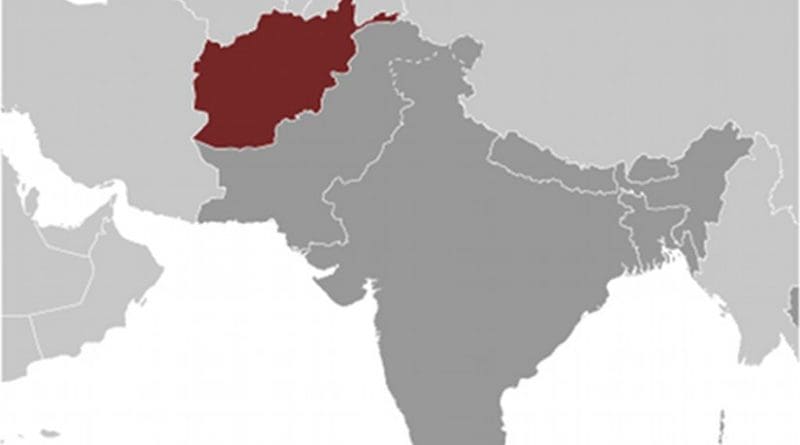US-Taliban Deal, IS-Khorasan And Peace In Afghanistan – OpEd
By Zabihullah*
In the aftermath of finalizing deal between US and Taliban in February 2020 which paved the way for Intra-Afghan negotiations, hopes and anxiety of perpetual stability have raised in Afghan nation, but it seems difficult to reach soon.
Afghan nation is skeptical about intentions of Taliban and foreign actors, specifically U.S about the aftermath of its troop’s withdrawal and stability in their country. Afghanistan has experienced such massacres in the past which made the nation fearful of today’s peace process.
For instance, the deal between President Najeeb and Mujahedeen in 1992 which led to civil war, and the capture of Kabul by Taliban in mid-1990’s from Mujahedeen in the aftermath of which large number of Mujahedeen left their leadership and joined Taliban government.
Today the same dilemma exists and Afghan’s perceives this agreement not as a peace granter rather continuation of war with different flag and motives. Currently, Taliban, IS-Khorasan and Al-Qaeda are three major obstacles for peace in Afghanistan.
In political and civil environment there exists a tension that peace agreement with Taliban cannot bring stability in a sense that there are some contradictions between factions inside Taliban. Like, Mullah Muhammad Rasool, who leads a group of Taliban active in Southwestern part of Afghanistan has stated his opposition for US-Taliban peace deal and his will for progression of fight with Afghan and foreign troops.
Moreover, different reports says there also exists some dissatisfaction between military body of Taliban which may pave the way for more division after finalizing peace deal with Afghan government therefore these factions in order to survive can join Rasool’s group in the future.
Alternatively, IS-Khorasan (Daesh) is another destiny for dissatisfied Taliban with their leadership to join, which can become stronger in the future due to its recruitment of Taliban. In fact, IS-K is synonym and it has replaced Al-Qaeda in Afghanistan therefore it maintained severe pressure on government to tackle it as they did in Nangarhar province, but they still exists in Eastern Afghan provinces with estimated 1,000 fighters.
Recently, IS-K has committed huge attacks, like in Nangarhar province on 12, May which killed at least 24 people and left dozens wounded in suicide attack at funeral. In March they also attacked a sick temple in Kabul and killed almost 25 people.
According to recent UN report there are estimated 8,000-10,000 foreign fighters in Afghanistan which can be source of recruitment for IS-K and it isn’t tough for it to revive itself and regain its footing in Afghan soil.
The report also claimed relations between Taliban and Al-Qaeda. As mentioned above that IS-K has replaced Al-Qaeda therefore it can be predicted that in future after peace agreement between Afghan government-Taliban, IS-K can replace both because in the past also many Al-Qaeda and Taliban members joined it.
In addition, Taliban and IS-K in post U.S deal scenario also haven’t fought any violent conflict as they did in past which rises doubts over the collaborations between both groups.
On the other hand, at least 2,800 bombs and armed attacks from Taliban killed some 240 and wounded more than 300 Afghan security forces. Along this, about 789 civilians have been killed and injured by taliban attacks since February, 2020.
Taliban in their agreement with U.S has not agreed on permanent ceasefire with Afghan security forces and operationalized huge attacks like the one in the month of May where they attacked security forces in Laghman province and killed 27. They only had ceasefire in last eid days.
Such attacks from taliban have raised doubts over their intention for peace with government because Afghan intellectuals and civilians perceives that taliban should have declared ceasefire if they were willing to smoothly pave the way for Intra-Afghan dialogues. However, to take hold and gain much from Intra-Afghan negotiations, taliban are going for huge attacks.
US-Taliban agreement alone cannot bring stability until there is no agreement in Intra-Afghan negotiations because final actors who can decide the future of Afghanistan are Government and Taliban. So scheduled US and foreign forces leaving Afghanistan is premature.
The agreement between US-Taliban runs into an unpredicted future for the region, specifically for Afghan dilemma. There are also chances that this area could again be save heaven for global militant groups if the peace deal and Intra-Afghan dialogue have not been done successfully with agreement from all parties including the will and agreement of afghan citizens from all ethnicities and minority groups.
*Zabihullah, MPhil International Relations Scholar, Iqra University Islamabad, Pakistan

